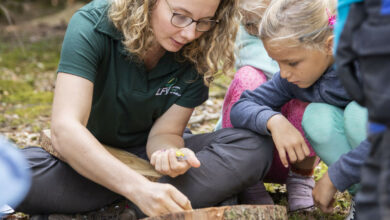
San Francisco’s world-famous Cable Cars celebrate their 150th anniversary this year. These ancient streetcars, which rattle through the hilly West Coast city on moving steel cables, are a unique tourist attraction. Inaugurating the anniversary year of the Cable Cars, San Francisco’s Mayor London Breed took a ride on the historic, green-painted wooden car „Big 19,“ built in 1883. The cable cars were introduced in response to the city’s steep streets, which were too challenging for horse-drawn carriages. Andrew Hallidie, a British immigrant drawn to California by the Gold Rush, installed his steel cables, already in use in gold mines, into street tracks. The first cable cars clattered through the city in August 1873. The cars are driven by a kilometer-long steel cable running just below the street’s surface, constantly in motion. The cables are driven by a massive motor at a central control station. This simple propulsion system quickly gained popularity worldwide and was adopted by cities like New York, Chicago, Los Angeles, London, Paris, Sydney, and Melbourne. However, electric streetcars with overhead wires eventually surpassed them in terms of cost-efficiency and speed. Cable Cars now remain only in San Francisco, thanks in large part to the efforts of activist Friedel Klussmann. In 1947, San Francisco’s then-mayor proposed replacing all Cable Cars with cheaper buses, but Klussmann’s citizen initiative successfully fought to preserve them. The cables were even designated a „National Historic Landmark“ in 1964. Prior to the devastating 1906 earthquake, there were more than a dozen Cable Car lines, but today only three are operational. Every year, millions of passengers rumble through the city—riding a Cable Car is a must-do experience for tourists, along with visiting the Golden Gate Bridge. Calvin Watts, a former bus driver, has been a Cable Car conductor for twelve years. He finds joy in witnessing passengers‘ excitement during the ride, with some acting like small children jumping around, prompting him to gently rein them in. The „Gripman“ plays a critical role in operating the Cable Cars, using a device called the „grip,“ a type of clamp located beneath the vehicle, to attach it to the constantly moving steel cable. The cars go uphill and downhill at a speed of 15 mph, sometimes with a gradient of 21 percent. Derrick Johnson, a Gripman for 23 years, emphasizes the need for fitness, agility, and fearlessness in this role. He trusts the ancient technology, although occasional accidents occur when cars collide with Cable Cars. In addition to operating the grip, drivers also work the brakes and the heavy bell on the Cable Cars, which are used to warn motorists and pedestrians to keep their distance. There are even bell-ringing competitions where employees vie for the title of „World Champion Bell Ringer.“ In the anniversary year, the transport company is offering discounted tickets, tours of the Cable Car workshop, and rides on freshly renovated cars. Rick Laubscher of the „Market Street Railway“ Foundation, which advocates for the preservation of historic railways, exclaims, „These are vehicles that our great-grandparents rode on. They’re noisy, they rock, and they’re just a lot of fun.“ When asked about the best spot on the sometimes open wooden cars, conductor Watts suggests standing at the very front, near the edge. Passengers can stand on a small platform, hold onto a long pole, and lean out into the open during the ride. As Watts proudly states, „There’s only one place in the world where you can experience that.“



